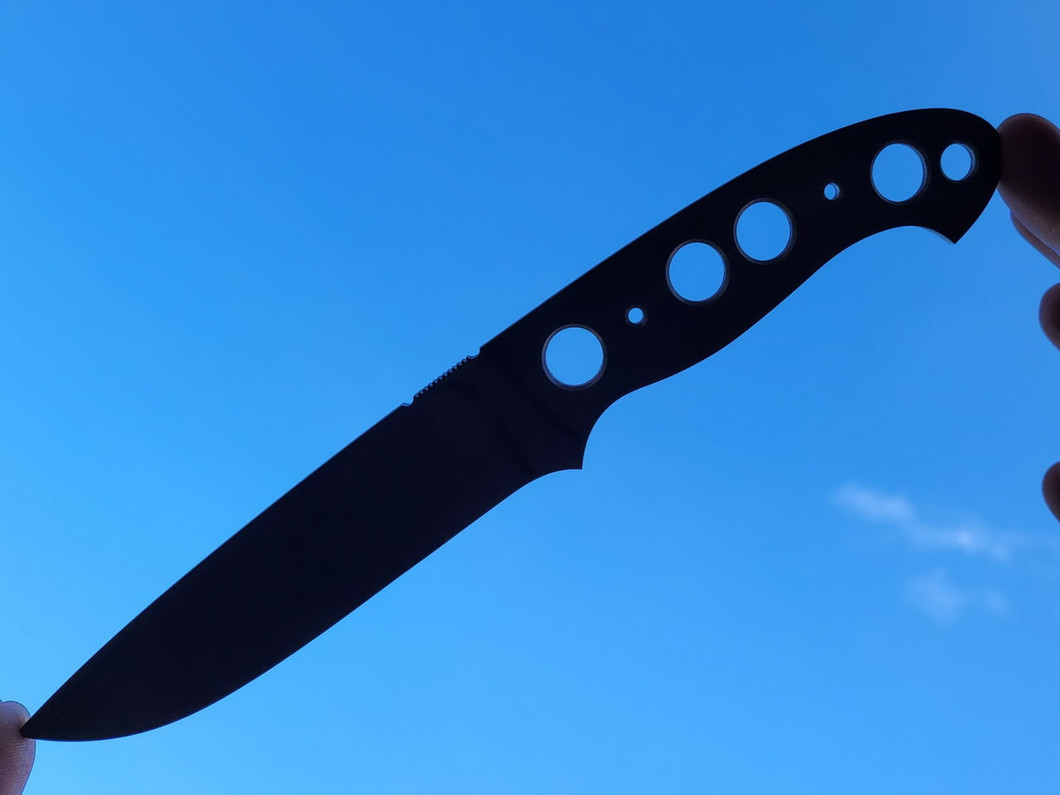Beginner Knife Making Tips from Dwayne Williams, Knife Making Awards 2020 Winner
Beginner Knife Making Tips
By Dwayne Williams, Australian Knife Making Awards 2020 Winner
Hi all,
Bjorn has invited me to share a few tips which have helped me on my short knife making journey. For those who don’t know me I am an electrician who has always had an interest in wood work and dabbled in some minor metal fabrication constructing gates, benches and tables for the shed at home. I was privileged enough to win the Best Outdoor Knife by a beginner category at last year’s inaugural knife making awards hosted by Nordic Edge.
Inspired by a few Instagram posts that the algorithm decided I would like from Aussie makers such as Ian Stewart, Nick Tanner and Jerarmie Heywood, I started making knives in March 2020 just before the Australia wide Covid lock down came into place. This was a stroke of luck as like most people I found my self with a bit of spare time on my hands. I have since gone on to complete 14 knives and become a probationary member of the Australia Knife Markers guild.
The following advice has been gained through numerous sources and helped me along the way. Hopefully there will be something you can take away to improve your making.
Design
As awe inspiring as a 10 inch bowie or 250mm plus kitchen knife with a large distal taper is they are a very large and if you are just starting out there is going to be nowhere to hide if your grinds, HT and finishing is not up to scratch. I believe a blade around the 4 to 5 inch mark is a good place to start.
Handle shape and construction should also be considered. My first 3 knifes were full tang with scales and it was only after I got comfortable with the process that I attempted my first hidden tang. If you want to add complexity to your build you could try segmented scales. Check out J C bladework’s for some great examples of what can be achieved.
Do not get carried away with complex shapes and multiple finger grooves. Simple flowing lines with an adequate grip length is all you need. I aim for a usable grip length of around 95 to 105mm.
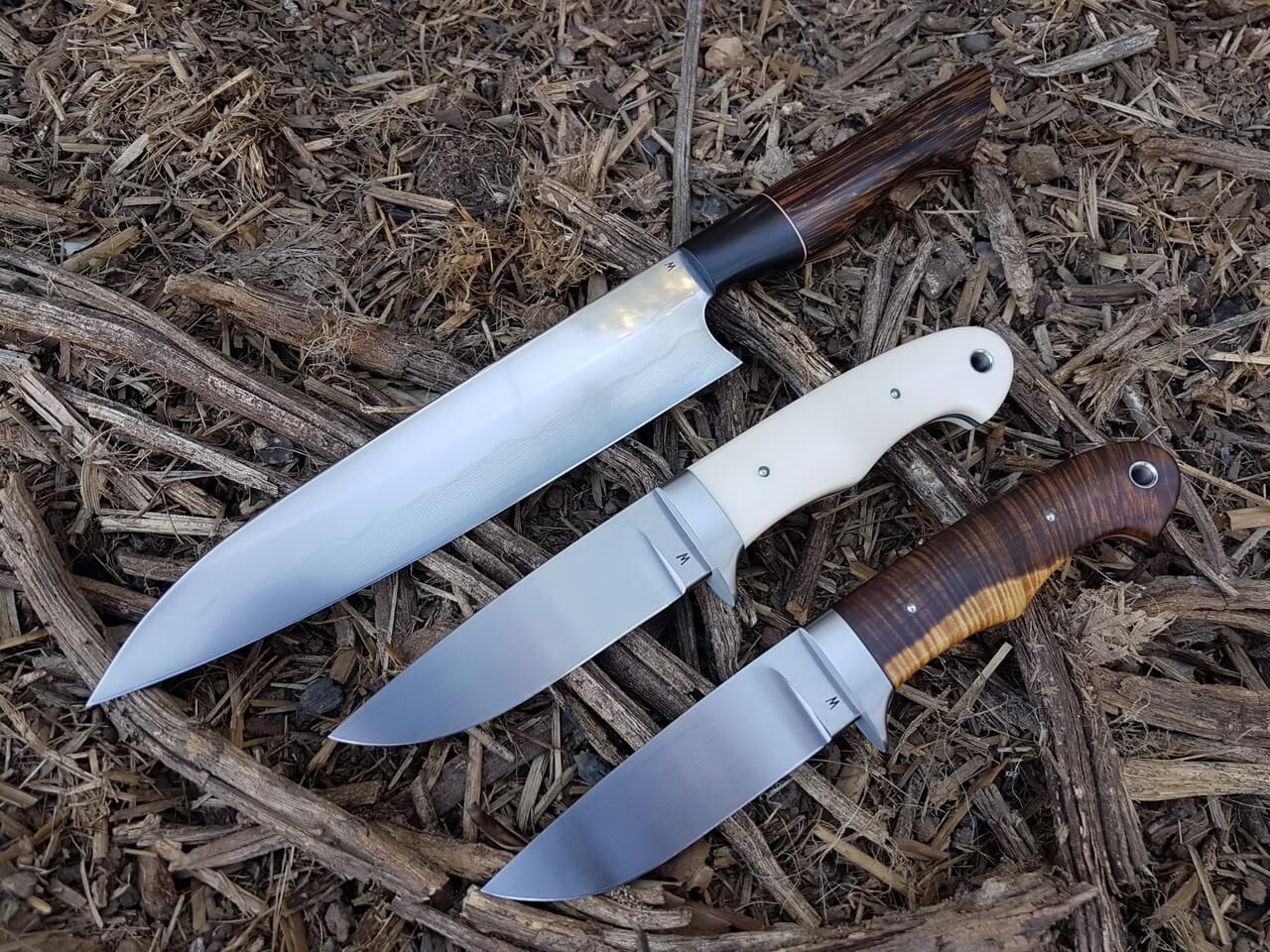
Material
It has been said one thousand times before, but I will say it again I believe it’s a real advantage to use a known steel that is easy to heat treat. Simple high carbon steels like 1075 and 1084 are cheap, easy to work in the annealed state and have relatively basic heat treat schedules. In my first 6 months for every 3 knives I completed 1 blank was relegated to the junk pile. While I was disappointed a bit of the sting was taken out of knowing that I had only wasted $10 worth of steel.
As for handle material the options are endless and it just comes down to personal preference. A good two part epoxy for glue up is a must.
Techniques
I will skip any instruction on bevels as I’m still learning myself. Best thing you can do here is watch plenty of You tube videos and just get in a practice on some cheap mild steel or something similar. I use an adjustable rest with the blade screwed to a block of timber. I found this gives me a great level of control and you still have a bit of feel.
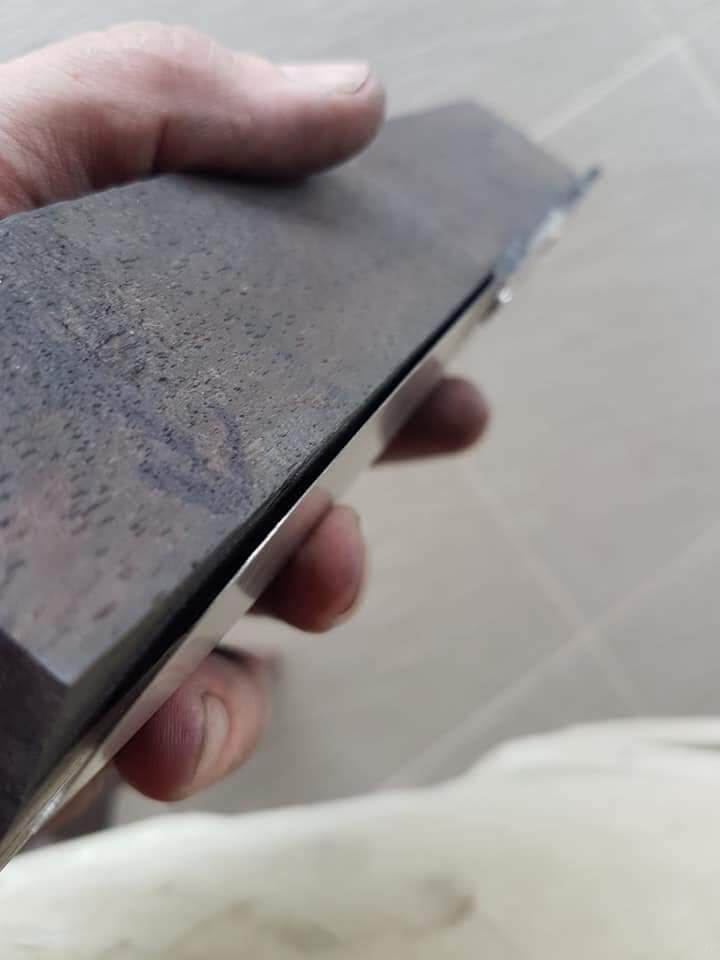
Hand sanding and the final finish of the blade is an area that can raise a knife to the next level. My winning knife was a very simple design and construction but the feedback from the judges was that the finish and hand sand were perfectly executed which I believe made up for the lack of technical elements of the build. Better to do a simple knife perfectly then a knife with many techniques poorly.
I achieve my results using a quality Wet and dry sand paper such as Rhynowet, a flat backing like a file or piece of flat bar and Windex or WD 40 to help flush the grit a way. Use the sand paper like its free. I would spend no longer that 1 minute sanding before I turn to a new fresh sharp surface.
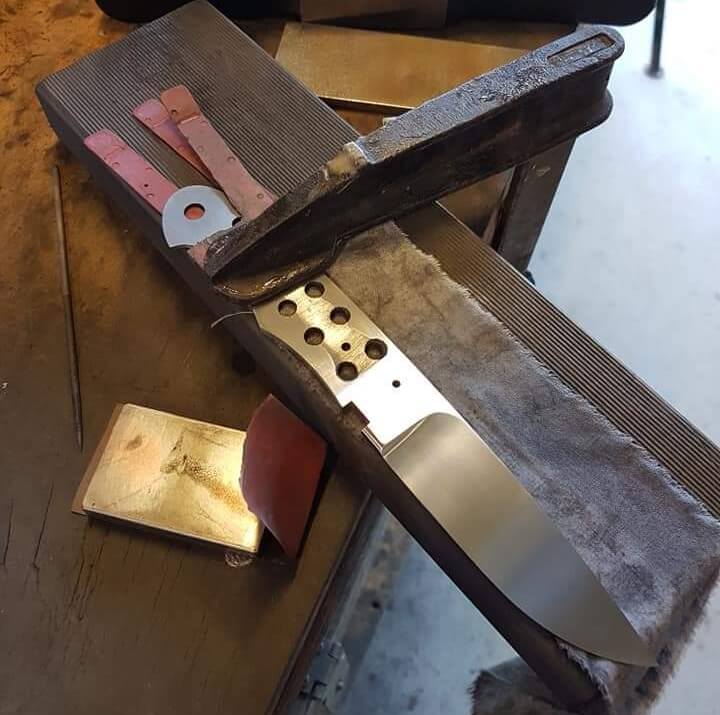
If you come of the grinder or file jig and the blade is a bit lumpy start by flattening it off with a diamond plate. I use a 6 inch DMT Dia-sharp bench stone purchased from the Highgate Group to get things nice and flat before I start with the sand paper. I also have a set of diamond hones from Ross Arnold at Minnow Creek Knife and Tool which are pretty handy and get a fair bit of use.

I usually start at 240 grit and work my way through to the desired finishing grit, which for me is normally 600. Its important not to move onto the next grit until all the scratches from the previous grit have been removed. Alternating between sanding straight along the blade and at a 30 to 45 deg angle is the best way to achieve this. For example if you start at 240grit straight along the blade when you move to your next grit sand at and angle until you can see no more straight scratches along the blade. That’s when you know it’s time to move up to the next grit this time sanding straight with the blade until all the angle scratches are gone. Gough Customs on YouTube has a great video on hand sanding and satin finishing.
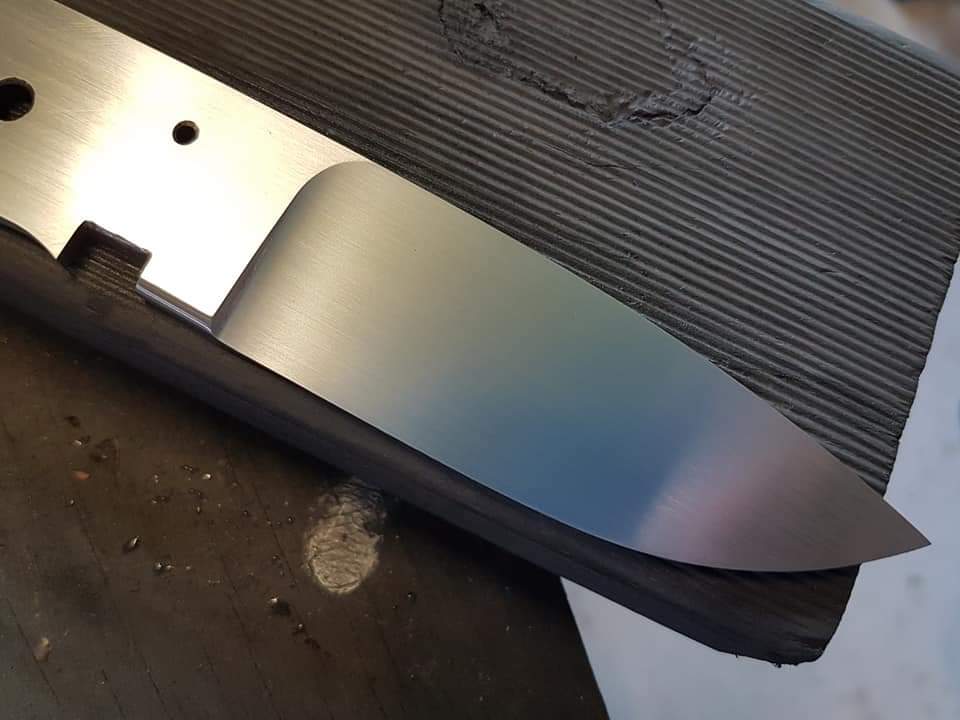
General Advice
If you are looking for more in-depth explanations on various processes search through Ian Stewart’s posts on the Australian Beginner Knife Making Group Facebook page. Ian has been lucky enough to have been instructed by some of Australia’s best knife markers and generous enough with his time to post a series of practical step by step processes for most techniques a beginner is likely to have problems with. You may not agree with all his process but like he says “IT’S JUST HOW I DO IT”
Last of all have fun and don’t get to stressed, I enjoy knife making but there have also been times (working on my 3 Guild knives comes to mind) I have invested too much time, energy and started to loath it, that’s when I knew it was time for a break. It is often quite easy for new hobbies to turn into an obsession which can have negative impacts on your personal life. You know what they say happy spouse happy house.
Well hopefully I haven’t just wasted 5 minutes of your life and there is something you can take away from my ramblings to improve your knife making. If you are submitting a knife for the awards good luck, I’m looking forward to seeing them.
Cheers Dwayne
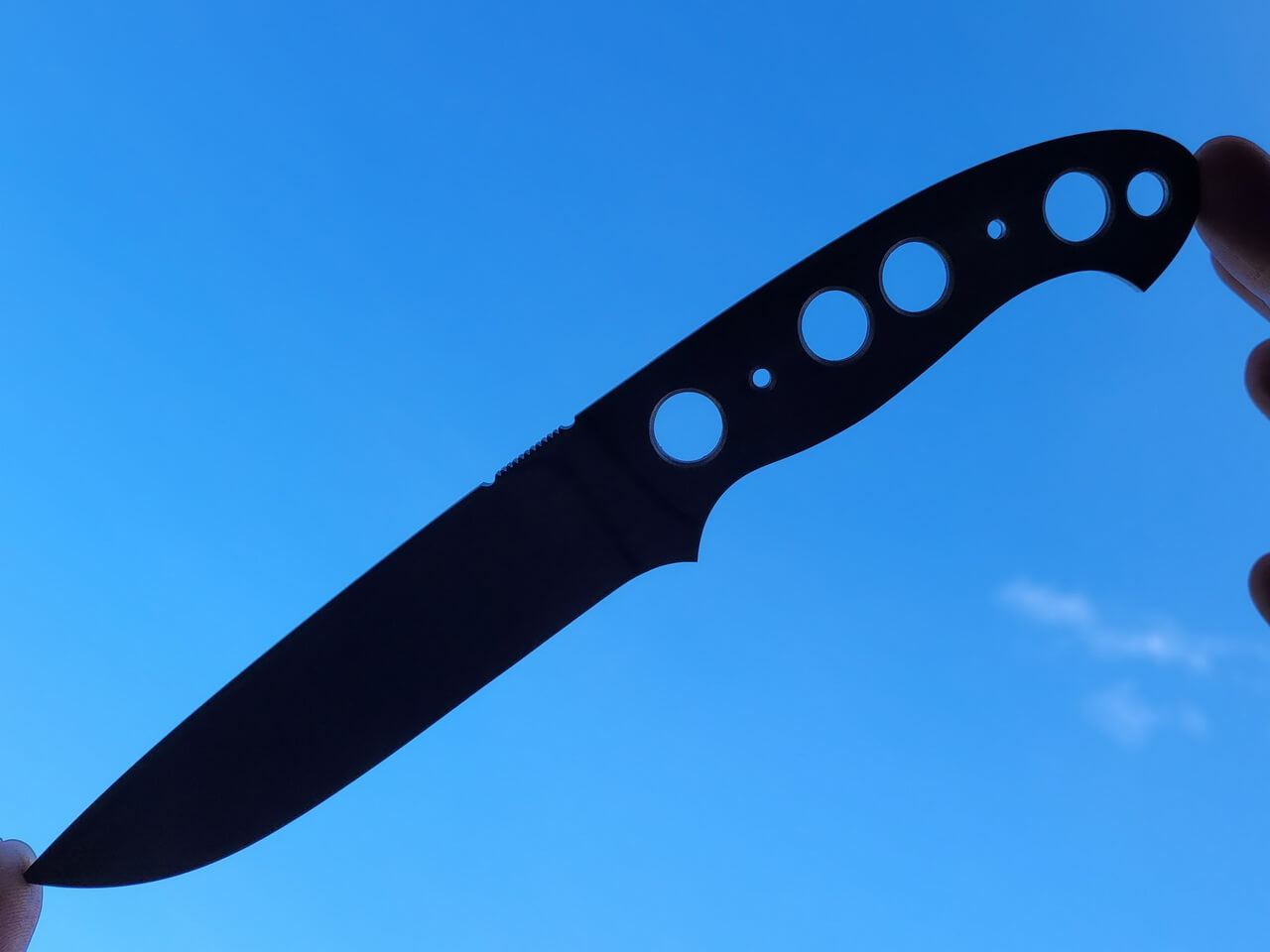
A Big Thank You to Dwayne for taking the time to help with some pointers. The main photo is showing how Dwayne is holding the blade up towards the sky to clearly see the profile. This is a trick Ian Stewart is a big fan of, using the sharp contrast this view creates to highligh the profile of the blade. Anything that sticks out and not looking "right", might be easier to see this way.
Bjorn
Recent Posts
-
Why Bed The Tang In Epoxy - Then Knock it OFF Again.
What is "Bedding the tang"? Bedding the tang means gluing a stick-tang blade into the handle block i …21st Mar 2025 -
Marble Leather - How to Dip Dye Veg Tanned Leather
This was my first experiment with hydrodipping or dip dying leather, and it came out pretty cool! I …14th Mar 2025 -
Make Burl Wood POP!
Staining wood with leather dye. or "How to make burl wood really pop". This technique really only wo …8th Mar 2025

